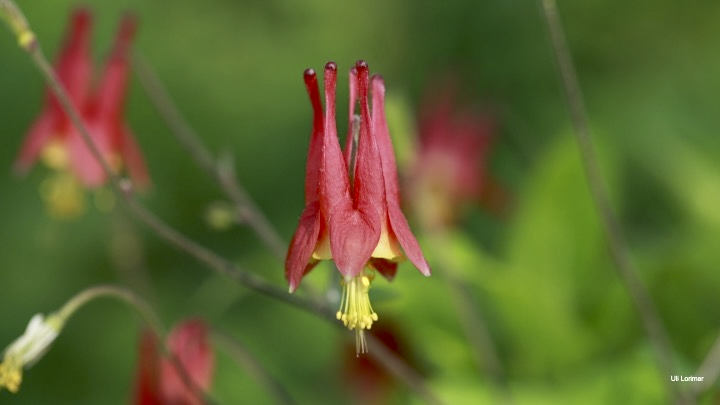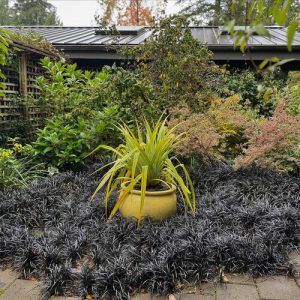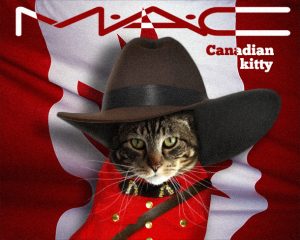
MAYBE MORE than any other topic, the use of native plants has consistently figured among the top garden trends in recent years. Just how popular is the movement toward a more ecological focus in the way we design and care for our landscapes?
And how does that effort keep moving forward and growing among those of us who are home gardeners when there can be obstacles, like how hard it can be to find locally appropriate plants at the garden center?
I talked about that and more with Rebecca McMackin, an ecological horticulturist who creates and manages dynamic landscapes, including a new garden she recently made for the Brooklyn Museum. Rebecca is currently the arboretum curator at historic Woodlawn Cemetery in the Bronx, and was a Harvard Loeb fellow in 2023, studying ecological design and the history of native-plant movements. For a decade before that, she was director of horticulture at Brooklyn Bridge Park.
Read along as you listen to the Feb. 19, 2024 edition of my public-radio show and podcast using the player below. You can subscribe to all future editions on Apple Podcasts (iTunes) or Spotify (and browse my archive of podcasts here).
 the native movement, with rebecca mcmackin
the native movement, with rebecca mcmackin
Margaret Roach: Before we get started, I have to ask you, is your dog’s name really Winterberry?
Rebecca McMackin: Yes [laughter]. Yes, it is.
Margaret: It’s like my favorite plant, the native Ilex verticillata.
Rebecca: He’s my favorite dog, so that works well.
Margaret: O.K Yeah, Winterberry. Hello, Winterberry [laughter]. And I also want to say you publish and you do a newsletter that people subscribe to, which I always love. You have lots of links and ideas about native plant-related, ecological horticulture-related topics. Do you do that every month? Is that right?
Rebecca: So my goal is every month. It doesn’t exactly come out every month, but that’s the hope that it comes out on each full moon. But yeah, that would be great. I think this movement, we’re all really learning, and evolving, and changing so much that it’s just a way to gather all the new information that comes out and then send it out to people.
Margaret: So a little backstory: A few weeks ago on the show, I talked with Nancy Lawson, a naturalist who goes by the name of the Humane Gardener, and we were discussing a blog and a social media post she had done about sort of the negative language that people use about naturalistic landscaping, sometimes calling a front yard that’s not mown lawn, that’s like meadow-ish or something, they call it “overgrown” or “messy,” things like that. And how we needed to start thinking and speaking differently.
And you got in touch with me after you heard that conversation. So that’s sort of the backstory of why we’re talking today. I assume it wasn’t the first time you’d ever heard such disparaging remarks [laughter]. Yes?
Rebecca: I mean, language is so central, right? We’re trying to shift people’s perspectives here. And for many of us, this is a whole new way of looking at gardens and landscapes. So, of course, the language has to shift, and I loved that conversation. I thought it was wonderful, for what do we call the aesthetic that we’re going for? If it’s not overgrown, what are the positive words? And there were hundreds of comments on that post.
Margaret: Yes.
Rebecca: Some of my favorites were “lush” and “diverse,” but I was wondering if you had any that you thought really better described that sort of landscape.
Margaret: I don’t know. I mean, there were so many that were like… I don’t know, like, 400 or something people. We asked people to free-associate in the comments on my website. And yeah, it was wonderful. I mean, I just think “alive.” But yeah, there were a lot of good choices.
Rebecca: Yeah, I really loved “natural” and “naturalistic.” I think those are such good terms, but I’m super-nerdy, so I like “ecologically functional,” but I’m not sure that one has broad appeal.
But I think when I was listening to you and Nancy, I kept on thinking about all of the words we don’t have, and how that can really limit what we care about, and sometimes even what we see as well. And it reminded me of this realization that I had this fall when I was working at Woodlawn Cemetery, which, as you mentioned, it’s this 150-year-old cemetery that has maybe one of the best collections of Japanese maples in the country.
And these Japanese maples are these gnarly, century-old beauties. And I was there on this walk, and they were just on fire, in their autumn glory. And underneath each one was a brilliant orange or red carpet of leaves that was scattered around the headstones and offset the canopy. And the carpet added so much to the overall beauty of the tree and the atmosphere. And as we know, those leaves are so important ecologically, because most moths and many butterflies spend a huge portion of their lives in the leaves. And they insulate the ground, and slow water down, and help it infiltrate the soil.
So there are so many reasons to leave the leaves, but one of the ones we never seem to talk about is beauty.
Margaret: Yes!
Rebecca: And I’m thinking of those famous photos of ginkgos with fluorescent yellow leaves all around them. It’s like an aura. And how many native trees we have who do the same thing, like honey locusts and sweetgum, with their brilliant leaf carpets. But we don’t have a name for it. And so a lot of us don’t even see it or even recognize it as valuable. And so I think we need a name for that as well, for that fall leaf carpet.
Margaret: Similarly, actually, now you’re going to get me free-associating off-topic. But a friend of mine, Marco Stufano, formerly of Wave Hill garden in the Bronx, at petal-drop when the flowers would drop off the spring trees like crabapples, for instance, he’d call it a pink puddle beneath the trees, or pink pool. And I think that’s another thing that a lot of times people are like, “Oh, let’s rake it up. Let’s get that out of the way. Let’s get out the blower. Get the mess. Get the mess away.” But it’s not a mess, is it?
Rebecca: It’s absolutely gorgeous. It’s one of the benefits of having these plants in our landscape. And I think hopefully there are Japanese terms for both of these, and maybe we can just find those out and use them as well.

So you did a recent talk that I watched for this educational organization, this nonprofit called New Directions in the American Landscape [that talk will be given again Feb. 22, 2024, for Ecological Landscape Alliance]. And in that talk for them, you sort of referred to the effort toward a more ecological approach to horticulture.
You called it a movement, but you had this sort of chart, this background, and there were all these circles of different sizes on it [above], and each circle had a name, and it was like all these, I don’t want to say factions as if there’s warring among them, but different segments, so to speak, each that called itself something.
So this world of ecological horticulture, it’s all these different groups of people. It’s not one movement, or how do you see it?
Rebecca: I think broadly, it’s both. Of course, the answer is always yes. It is both this massive, global movement of millions of people who are trying to foster biodiversity in our gardens and on our land, in response to the ecological destruction that we’re seeing all around us. And that was one of the things that I had the good fortune to study while I was at my fellowship, was to not only study the history and the status of all these movements, but to try and figure out how those of us doing this work here today can cultivate the most impactful, and far-reaching, and diverse gardening movements possible, and so there’s…
Absolutely; I think it’s one movement. I would argue that it’s one movement, but that the multiplicity of the names for each individual movement is actually very helpful. I like the term ecological horticulture. That’s the term I’m most comfortable with. I think it’s accurate. I think it’s fun to say, and it captures the level of sophistication required to do a lot of this work. I’ve also heard critiques that it’s too fancy; that it can be unwelcoming or elitist. And I think that’s a good argument for the term ecological gardening, which is also very popular and seems to be more inviting.
Margaret: And on that chart, as I said, with all these different circles on it in your presentation, there was conservation gardening, and permaculture, and regenerative gardening, and rewilding, and the New Perennial Movement, wildlife gardening, a bunch of other ones. The one that I always say that wasn’t on there, it’s probably not thought of by many people: I think of it as habitat gardening or habitat-style gardening. Do you know what I mean?
Rebecca: I love it. Yeah, I think it’s beautiful, right? And I think there’s a real question of whether or not it helps this movement. I think what we all want to do is grow this movement as big and as robust as possible. Does it help us to pick one term, or is it better to just have all of these terms proliferate so that there can be one term that a community in southern Texas decides to adopt and grow, and then another community in northern Maine can decide to create?
There’s a real beauty in that diversity as well, rather than just picking one movement. And also, I think one of the benefits of having so many different names is that it’s not one singular trend that can then go out of style.
Margaret: Right, right.
Rebecca: I hope that this movement really becomes what horticulture is more than anything. That it’s not just something that we’re all doing right now because hip, and that something else is going to come up in the future.
Margaret: Right. So whatever we do or don’t eventually come to call it [laughter], how big is it, and what’s sort of the reach now? Because in your recent talk, I was very interested to see that you had dug into what data is available out there, and you offered a kind of overview of the research that tries to estimate the scale of this movement. So what were some of the highlights?

But what they also found in 2021 is that one-third of all U.S. adults had planned to purchase plants to help wildlife, which to me is an absolutely ridiculous amount of people. That a full quarter of the U.S. population was buying native plants specifically. That’s more than 80 million people. And honestly, I couldn’t believe that. But then I found another academic study that put the numbers even higher. They found that 58 percent of gardeners had purchased native plants in the previous year, which gets us to 107 million people, which is literally one-third of the U.S. population.
So it’s mind-boggling, honestly, how mainstream this movement is and how long and how hard it’s taken so many people to get here, but it’s really succeeding, honestly.
Margaret: Yeah. So what you also pointed out in your talk is that supporting pollinators was the top motivator for people to give space to native plants and make other accommodations in their gardens, their home landscapes. And so, a lot of home gardeners, that’s what we’re thinking of when we make a plant purchase, or we change part of our design, or add a feature, or subtract a feature, or whatever: It’s about pollinators. Is there a bigger picture that you’d like us to think about? I mean, as opposed to that, is that too narrow?
Rebecca: I think the attention on pollinators is really wonderful. It’s amazing, and it’s beautiful, especially I love to think about flowers as methods of communication. I love to be able to read flowers and think about who they are calling to and what those relationships are. It’s amazing how much people love pollinators, and it’s such a good way to see and illustrate the importance of native plants.
That said, it’s not just about feeding bees, right? It’s not just about using these plants to feed animals. It’s important, of course, the dynamics between organisms is what this work is really about, but there’s also something critical about the plants themselves, that I mean, they evolved here. They evolved on this land. I see to a certain degree, I feel like I’m on their land, and I feel like we can make space for those plants on our land, whether or not they have those pollinator dynamics or not. I think it’s… We need to bring the plant back to the center of the conversation, as well as the pollinators.
Margaret: So not just the animals, yeah. And it’s one big food chain, so either way, one helps the other. But yeah, I remember years ago interviewing a person who was very expert in ferns, from the former New England Wild Flower Society. And she was saying to me, ferns don’t flower—obviously, they don’t flower—but that doesn’t mean they don’t contribute. They’re enormous contributors to the environment because they, for instance, move into a space that is disturbed, for instance, or damaged in some way. They moved in early. And they hold the ground, and they provide hiding places.
And so, again, I think of habitat. So even though they can’t feed any pollinators, they’re really important plants, right?
Rebecca: I love that term, habitat. I think it’s such a good way to think about it. And I think it’s also just really important to remember that the knowledge that we have about the ways that plants, and animals, and fungi all interact is so nascent, and such a tiny portion of what’s actually going on in the world. And even when I think about this over the last decade, the research that’s been done into the chemistry of nectar and pollen and all of the complicated relationships therein, there’s a form of hubris to think that when you see a bee on a flower that is good enough, that box is checked or we’ve done the work ecologically to take care of this ecosystem.
There’s so much more going on that pollen might not have the right nutrients. It might have chemicals that are harming, literally, that bee that’s collecting on it. And then there might be native plants around that aren’t getting pollinated because that bee is sitting on that flower, so it’s such a… We could never know is the point. We never can say that this is good enough. And so why not default to just looking at the plants that evolved around us, looking at the animals that evolved here, and have relationships with those plants, and trying to encourage those communities?

And you told a story about columbine, about Aquilegia, about our native columbine. You told a number of them, but that one especially charmed me. [Columbine above by Uli Lorimer.]
Rebecca: Oh, I mean, I think stories are so important, right? They’re how we learn about our world, and they get stuck in our head, and we can pass them along. And so when I think about the plants that I remember from when I was little, they’re the plants that I heard stories about. They’re like the buttercup that told my sisters if they liked butter, or the Queen Anne’s lace with the central drop of blood in the middle. Those were the plants that I would share that information with other people.
And I think that we have those same stories with the native plants around us as well. In the Northeast, we have jewelweed seedpods that explode in the most delightful possible way. And we have mountain laurel stamens that, when they’re triggered, they spring out from a sticky circus tent to bop bumblebees on the back. These are just incredible stories.
And the one that I really love, that Aquilegia canadensis one, I think, because it again illustrates the beauty of that relationship between animals and plants. And so the way that I like to tell that story is, of course, everyone can picture this cheerful little red bell hanging from a green thin stem. And I think that they’re the most cheerful of our spring wildflowers, but, of course, they’re not flowering for us.
Their bloom heralds the return of the ruby-throated hummingbird, the East Coast’s only hummingbird. After these tiny birds have flown thousands of miles on their migration from Central America to the Northeast, they rely on the sugary nectar of the red columbine to refuel. And they have reason to believe that that flower will be waiting for them when they arrive. The columbine stores their nectar at the end of long spurs, where only the long tongues of the hummingbird can reach it.
As the birds drink the nectar, they pollinate the flower. Both organisms benefit, and in fact, the hummingbird is the red columbine’s pollinator partner. The bird and the flower could not be more charming, but it’s in the dynamics between the two where the real magic resides. Birds have an extra photoreceptor that allows them to see red incredibly well, whereas bees cannot. Flowers have taken advantage of this and use the color red to communicate, which is why nearly every red flower you see is bird-pollinated. So as the ruby-throated hummingbird flies over land on their journey, a wave of red flowers blooms to greet them.
And I think that that is just this little pretty package that really shows this beautiful dance of symbiosis that’s happening all around us, among plants and animals that have evolved together for thousands, if not millions, of years. And how, when we plant native plants, we get a front-row seat to the wonders of the natural world. And I think stories like that, that’s just one, that’s a tiny little story. We can all collectively discover those stories and learn how to tell them, and that really opens people’s eyes to what’s going on in their backyards. And then, of course, how important this work really is.
Margaret: Yes. So, where do I get that columbine [laughter]? So, as I said in the introduction, even those of us who want to re-landscape or rethink some of our place with a more native-centric focus, sometimes it’s not easy because… And especially if you shop at a big-box store and you go in and all they have, as you said in your talk that I watched, cultivars upon cultivars of Echinacea, of coneflowers, but not a whole lot else to flesh out the place that we’re imagining, this—again, habitat is my word. Sourcing can be a real obstacle, and I don’t know how you encourage people to get past that. I mean, I have my crazy methods that I sort of preach, but any suggestions?

And I think it’s really about taking care of land more than anything, but it’s a really hard question, because plants are so limited. Finding those plants can be so limited, but there’s fantastic nurseries online. But I think the real question is information: How do we get people the information that they need? And thank goodness, there are so many great people and organizations doing this work like yourself, Margaret, of course.
Margaret: Oh, well…
Rebecca: Seriously, seriously, right? Taking people who are interested in gardening and helping them find the resources that they need to move even further into the practice. Same with people like Jennifer Jewell, and Thomas Christopher, and Joe Gardener [Joe Lamp’l]. They’re using their platforms to educate and inspire people.
I think a lot of us could maybe even take a more active role in mentorship, and community education, and gardening clubs, but just the easy things. I think there’s groups like Wild Ones that were out there, right? There’s chapters all over the country now, and those are people who are also actively doing this work. And not only can you get information, you can actually get plants, right? You don’t need to be buying plants all the time. You can be dividing, and sharing, and starting plants from seed with Wild Ones.

One of my other methods, which is more virtual at first, is that you really find your local organization or your native plant society by going to NANPS.org, which is North American Native Plant Society.org. And they have a list of, in every Canadian province and every state in the country, what the native plant society is, or sometimes there’s more than one. And if you click on the one—if you’re in Illinois and you click on the Illinois one—and then you go to that website for Illinois, one of their navigation buttons on their website, is going to be resources, and it’ll be like seed exchanges among other members, or nurseries they recommend in Illinois, or it’ll tell about hyper-local resources.
So you’ve got to find like-minded people in your area, whether through something like Wild Ones or a native plant society in your area. So I think those are really, really helpful ways to get started.
And then to learn to grow from seed also. That’s really important. And even winter sowing of a lot of native meadow flowers and so forth, if you have seed. So that’s another way.
Rebecca: Absolutely. I think even in researching around, there’s a lot… Not every state but many states have master gardener programs with focuses on habitat gardening as well. So there are I think more mainstream horticulture institutions are starting to focus also on this work, which is the goal. It’s amazing.
Margaret: Yeah. Well, lots to think about, that’s for sure. But I was so glad that you got in touch because, again, I think it’s a conversation we need to keep having, even with some of the difficulties, the obstacles. Because we’re not going to solve them as individuals. We’re going to solve them, as you say, as a movement, so to speak, and find all those resources we need together. So I appreciate it, Rebecca. I appreciate you making time today to talk about this, and I hope I’ll talk to you again soon.
Rebecca: Absolutely.
(Photos courtesy of Rebecca McMackin except as noted.)
more from rebecca mcmackin
prefer the podcast version of the show?

 the native movement, with rebecca mcmackin
the native movement, with rebecca mcmackin




